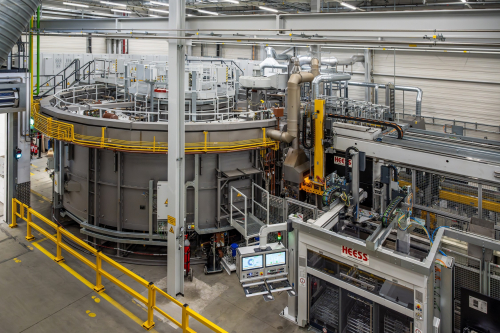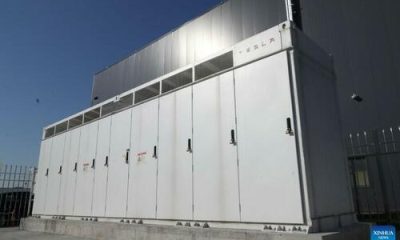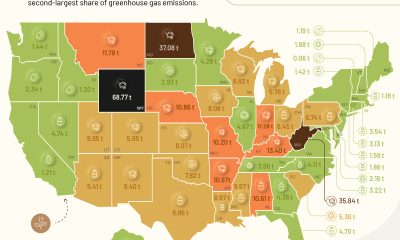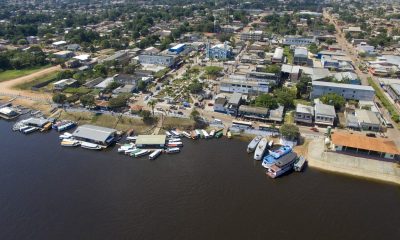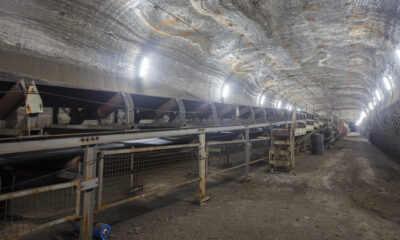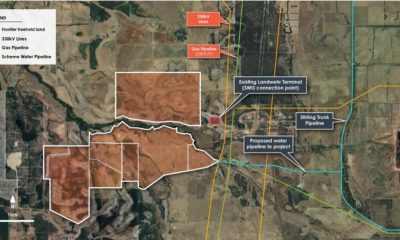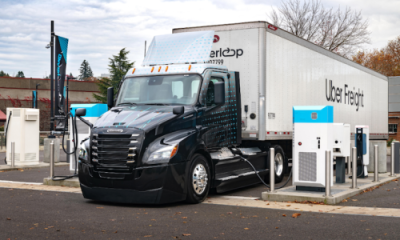Energy & Critical Metals
BMW plant brings electrically heated ring hearth furnace into operation
For the first time, chassis and drive component production in Plant 02.10 at the BMW Group site in Dingolfing is operating an electrically heated ring…

For the first time, chassis and drive component production in Plant 02.10 at the BMW Group site in Dingolfing is operating an electrically heated ring hearth furnace. Compared with its conventional gas-powered equivalent, the latest electric furnace currently saves some 300 tonnes of CO2 a year. With its innovative power-to-heat technology, the hardening furnace came at an investment of approximately €7 million.
Ring hearth furnaces—so-named because of the ring-shaped hearth where components are loaded and heated—are designed for heat-treatment applications such as annealing, stress relieving, and tempering of metal components.
The new furnace has a planned service life of over 40 years, so it’s a future-focused piece of equipment that sets the course for our journey to net zero.
—Marc Sielemann, responsible for quality and production of powertrains, chassis and brakes with Purchasing, and director of the Dingolfing component plant 02.10
Plant 02.10 in Dingolfing produces chassis and drive components for BMW, MINI and Rolls-Royce vehicles. As electric mobility ramps up, more and more components are being manufactured, including for electric drives. Existing systems are gradually reaching the limits of their capacity, so a new ring hearth furnace with a fixture hardening press was needed.
Used to harden gear wheels for electric transmissions, the system has production capacity of approximately 960,000 spur gears a year. Rather than using 33 gas flames in ceramic-jacketed pipes, as the older model does, the new furnace uses the same number of electric heating elements to heat up to 900 degrees Celsius.
Energy-intensive power-to-heat systems like this new electric ring hearth furnace support the decarbonization of heat generation—an essential aspect of climate protection. They generate heat by climate-friendly means and can be powered among other things with excess energy from renewables. For the future, we are looking into converting the remaining hardening furnaces to electricity as well.
—Marc Sielemann
The new power-to-heat furnace not only reduces gas consumption at Plant Dingolfing but also supports the integration of renewable energies into the electricity grid. It is another component in BMW Group Plant Dingolfing’s transformation to a sustainable BMW iFACTORY.
The BMW Group has set itself the target of being climate neutral along the entire value chain by 2050 at the latest.

Uranium Exploration Company Announces Additional Staking in the Athabasca Basin
Source: Streetwise Reports 12/22/2023
Skyharbour Resources Ltd. announced an update from its Canada-based Falcon Project along with additional…
Tesla Launches New Mega Factory Project In Shanghai, Designed To Manufacture 10,000 Megapacks Per Year
Tesla Launches New Mega Factory Project In Shanghai, Designed To Manufacture 10,000 Megapacks Per Year
Tesla has launched a new mega factory…
Giving thanks and taking stock after “a remarkable year”
An end-of-year thank you to our readers, industry colleagues and advertisers before Electric Autonomy breaks from publishing until Jan. 2
The post Giving…
